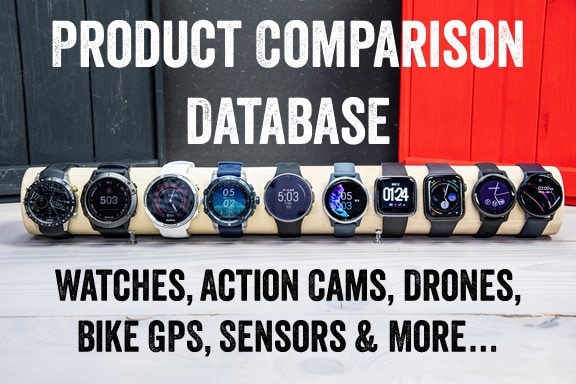
Yesterday Strava sent out an e-mail to users, outlining a change that’s occurring almost immediately, regarding 3rd party apps and the way apps are allowed to access and process data from Strava. All of these changes impact what is known as the Strava API (Application Programming Interface). That’s the piece that lets your Garmin watch push your workout to Strava, and then lets an app like VeloViewer or others access your data.
There are countless apps that use Strava’s API, literally tens of thousands according to Strava. Some of these are tiny, some of them are massive. Virtually every company in the space uses Strava’s API, including Garmin, Wahoo, TrainerRoad, VeloViewer, Xert, and plenty more. It’s become the defacto data hub for millions of athletes, some 100m+ according to Strava’s press release.
In any event, the e-mail Strava sent out, as you can see below, is pretty bland, and doesn’t really get into things:
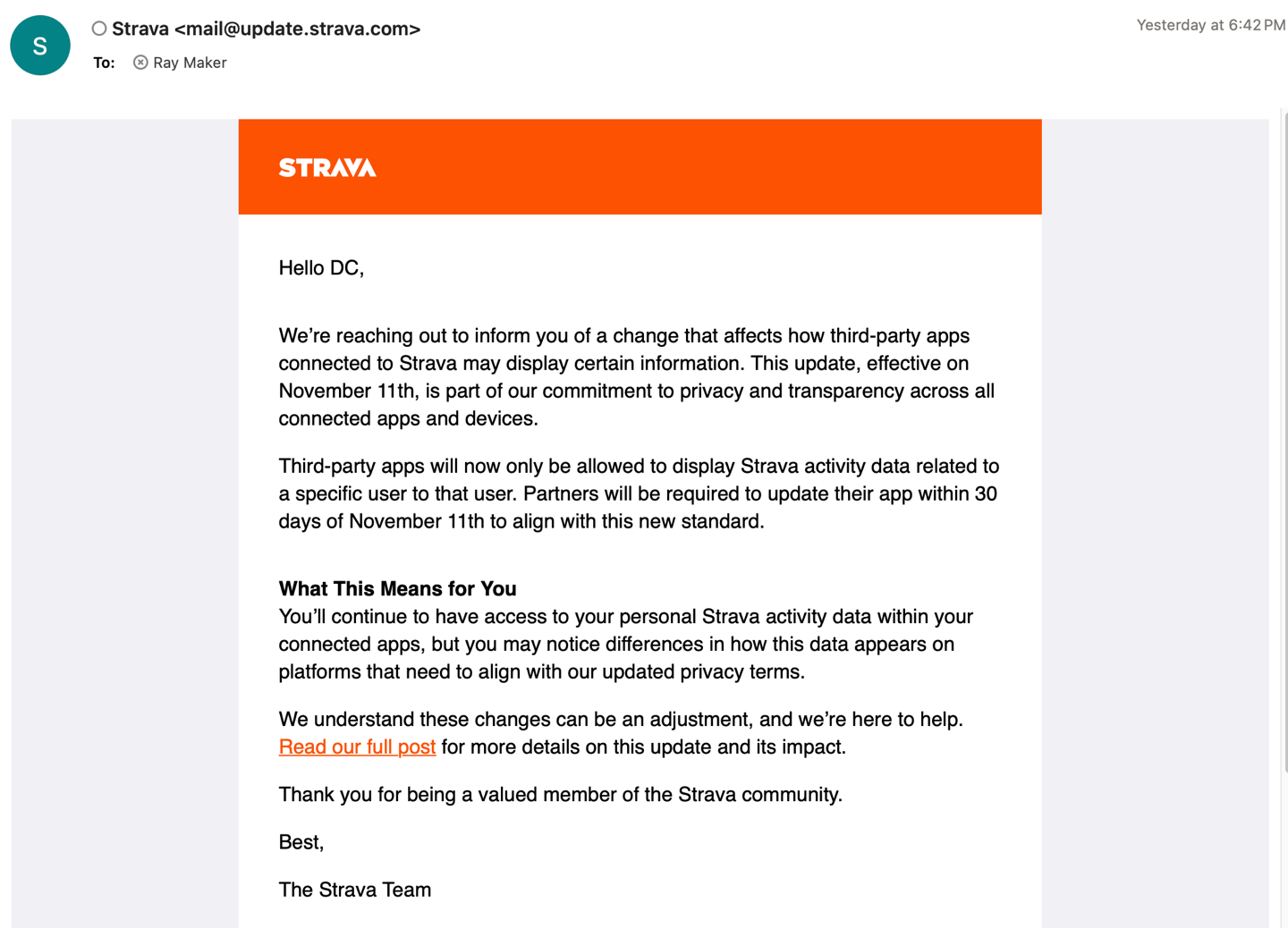
Instead, you need to crack open the included link to start understanding the implications. All of which roughly boils down to two main items (but a bunch of smaller things), there’s three biggies:
#1: “Third-party apps are no longer able to display your Strava activity data on their surfaces to other users.”
#2: “We’re updating our terms to explicitly prohibit third parties from using any data obtained via Strava’s API in artificial intelligence models or other similar applications.”
#3: “You may not process or disclose Strava Data…for the purposes of, including but not limited to, analytics, analyses…”
They also included language that apps are somehow not allowed to replicate Strava’s “distinctive look and feel”, which…ok. And more hilariously, they added that any users posting to their community hub forums that are “requesting or attempting to have Strava revert business decisions will not be permitted” and summarily deleted.
Said differently: Do not discuss the community things you don’t like in the community.
But again, the big three that matter here are:
#1: Apps can’t show your data beyond yourself
#2: Apps can’t use any “AI” whatsoever in their processing of your data
#3: Apps can’t do any analytics or data processing of your data
To understand how ridiculous these are, let’s outline some real-world apps you’re probably familiar with.
Breaking Coaching and Comparison Apps:
The first item (not showing data beyond yourself) immediately breaks almost all coaching apps that have connections to Strava. This includes apps like Final Surge, Xert, and Intervals.icu. These are apps that pull in your Strava data (as you requested) to analyze on your platform. For visual reference, this:
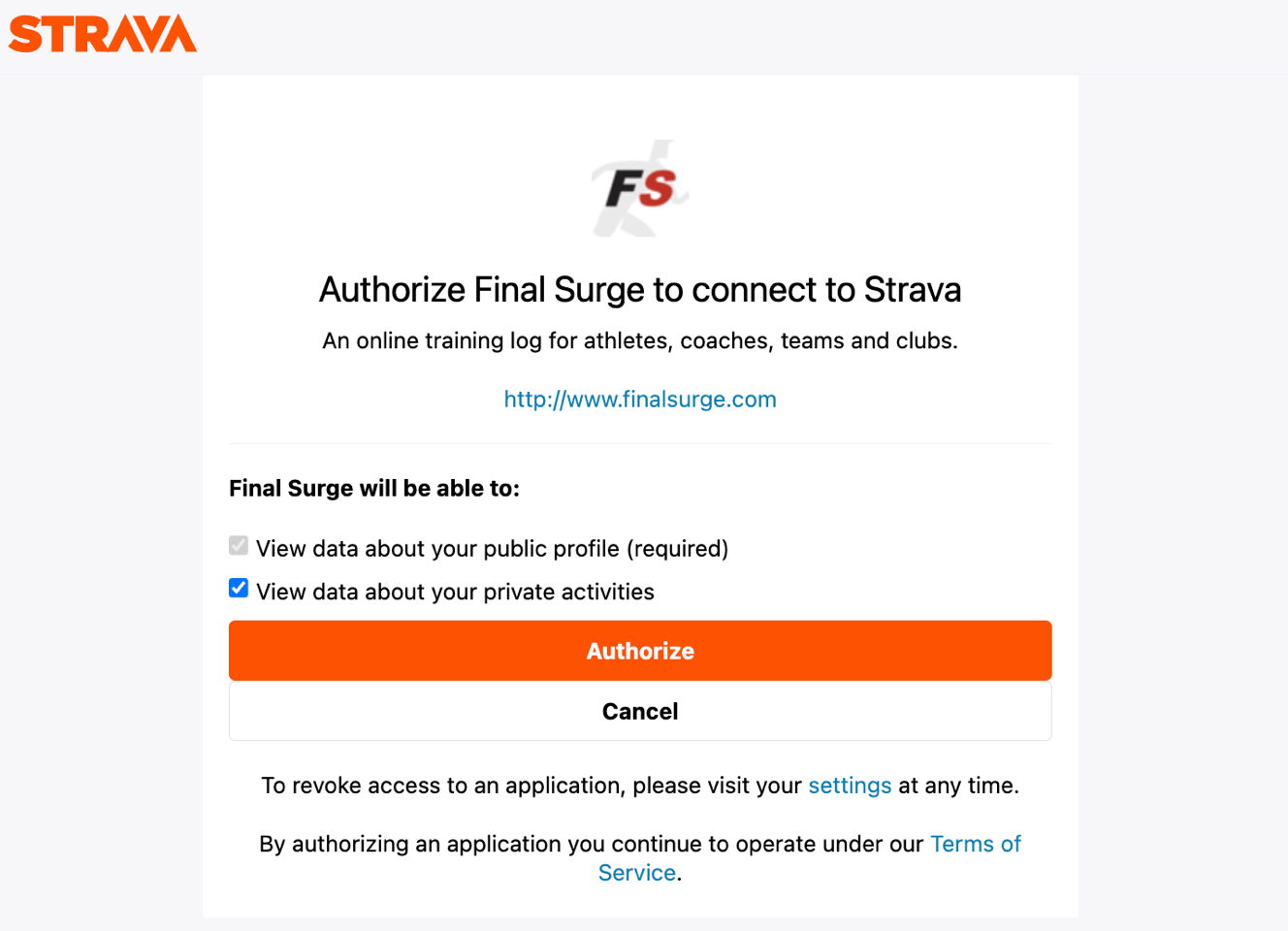
Now you may be wondering why they don’t just go directly to Garmin, Wahoo, etc… That’d be more effective, right? And indeed it is, and most of these apps do. Except there are literally thousands of device manufacturers out there, and many of them only connect to Strava.
Take for example the AmazFit T-Rex watch I’m testing right now. That doesn’t connect to Final Surge. Or Xert. Or TrainerRoad. Or much else. It does connect to Strava though, so, my data uploads to Strava and I’m done – off it goes to all my authorized apps. The same is true for the Google Pixel Watch. Or Samsung’s Galaxy watches. Below is a good example of how I can get all those data types into Strava.
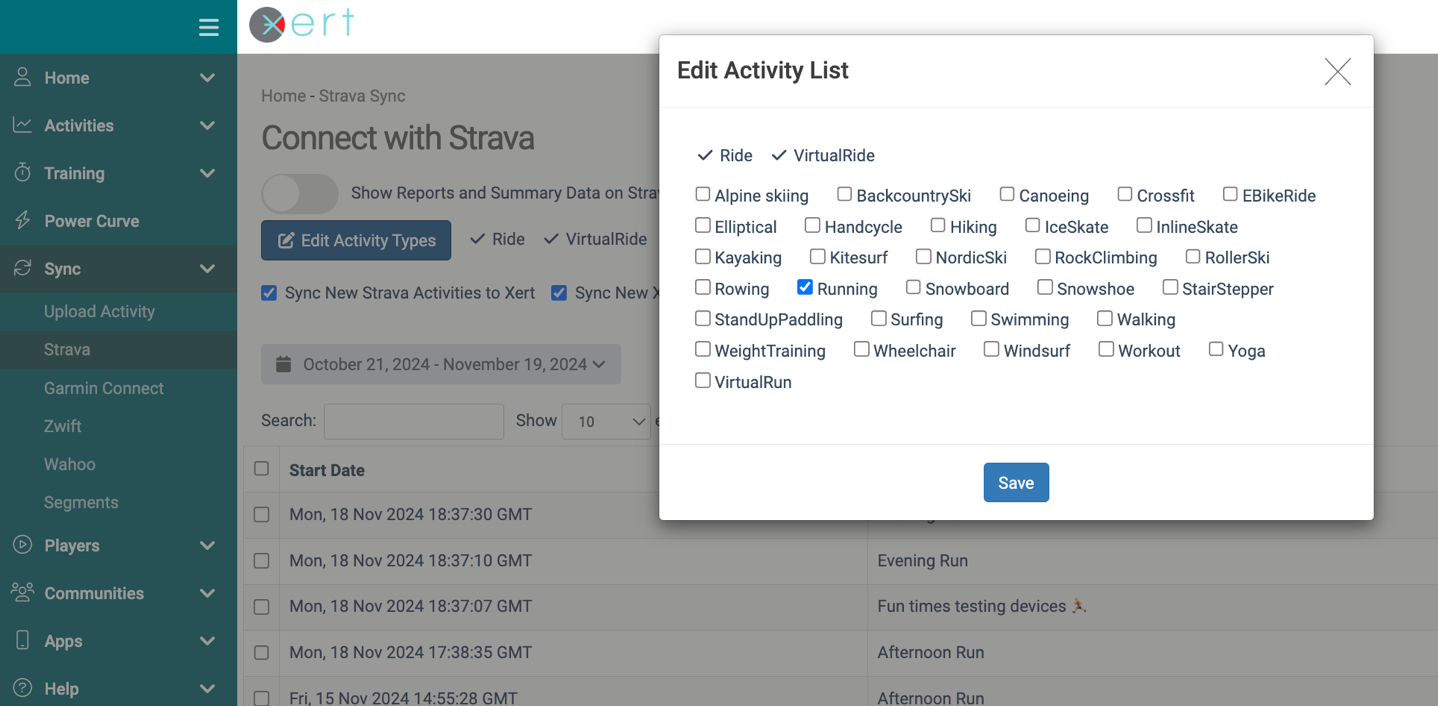
Strava benefits because they’ve become the defacto platform of choice for consumers. Companies benefit because they don’t need never-ending connections to platforms. And consumers benefit because everything ‘just works’. That’s the goal, right? Just working?
Well, not anymore.
With this change, apps that do any sort of coaching on their platform are not allowed to show the end users data to their coach. The new API terms and conditions explicitly prohibit this:
“you may not disclose such data to, or use it for, another user nor any other third party.”
In fact, the popular training and coaching platform Intervals.icu already posted this breaks all coaching features for them related to Strava data – requiring them to hide not only new user data going forward, but all historical data for coaches.
“Activities from Strava will soon only be visible to the athlete that performed the activity, not to their coaches or followers. This is a new addition to the Strava API terms and conditions.”
But it also breaks plenty of other apps that aren’t coaching apps – but merely showing Strava data. For example, apps like VeloViewer, which curates your lists of segments for deeper analytics and competition among groups, breaks. Same goes for all of their leaderboards for Zwift. Or their challenges. Or the listing of other people’s efforts (when you click on ‘View on Veloviewer’ from any of these below. All of it – going to be killed off if apps follow the letter of the law.
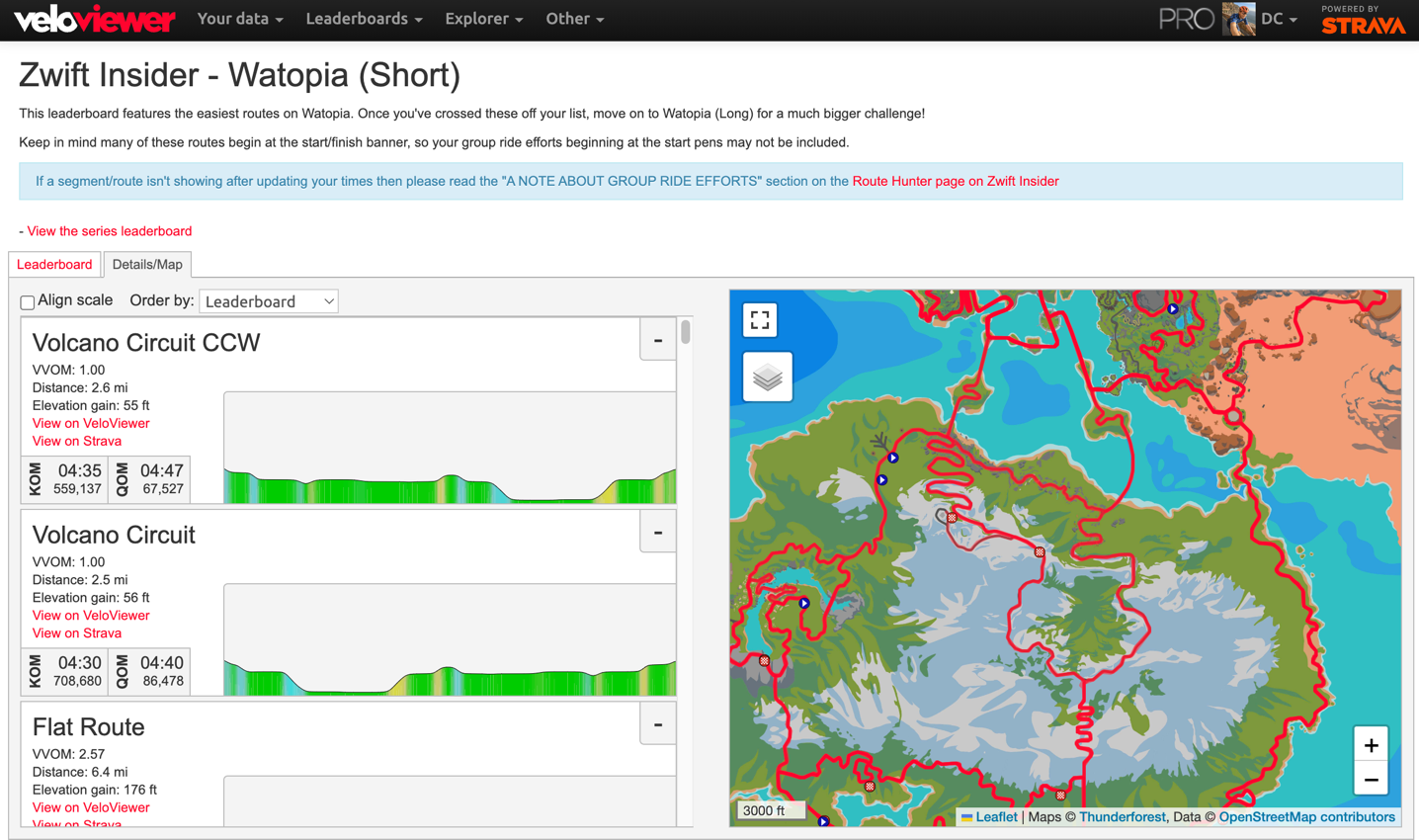
Like these details:

The challenge with these changes, is that practically speaking, unless you have a Garmin or other big-name device with a proper and well-documented public and easy to access API, all of these apps won’t set up connections to those device platforms directly. They can’t in some cases, and it won’t be feasible in most to service all of these app requests. Even seemingly big players like Wahoo, Hammerhead/SRAM, and Polar don’t have easily accessible APIs that scale well to the number of requests that are going to be required here.
No Analysis of Data Apps:
But wait, there’s more. Strava’s new API agreement also makes clear that you can’t do ‘year in review’ type summaries either. In fact, it actually says you can’t do any analytics or processing of the data:
“You may not process or disclose Strava Data, even publically viewable Strava Data, including in an aggregated or de-identified manner, for the purposes of, including but not limited to, analytics, analyses, customer insights generation, and products or services improvements. Strava Data may not be combined with other customer data, for these or any other purposes.
In fact, as one major app pointed out to me, the above paragraph basically says you can’t do anything with any data at all. While portions of the above entry existed in previous API versions, this paragraph has now been expanded to be more precise.
With the above line, you can’t do much of anything. You want to show a user how many miles they ran that week? Nope, not according to the letter of the law as that’s ‘processing’ for the purposes of ‘analytics’. You want to show them how hard their workout was compared to a year ago? Nope, can’t do that either, that’s ‘processing’ for the purposes of ‘analysis’. Want to create a heat map tile like VeloViewer has? Nope, that’s “aggregated” data for “insights generation”:
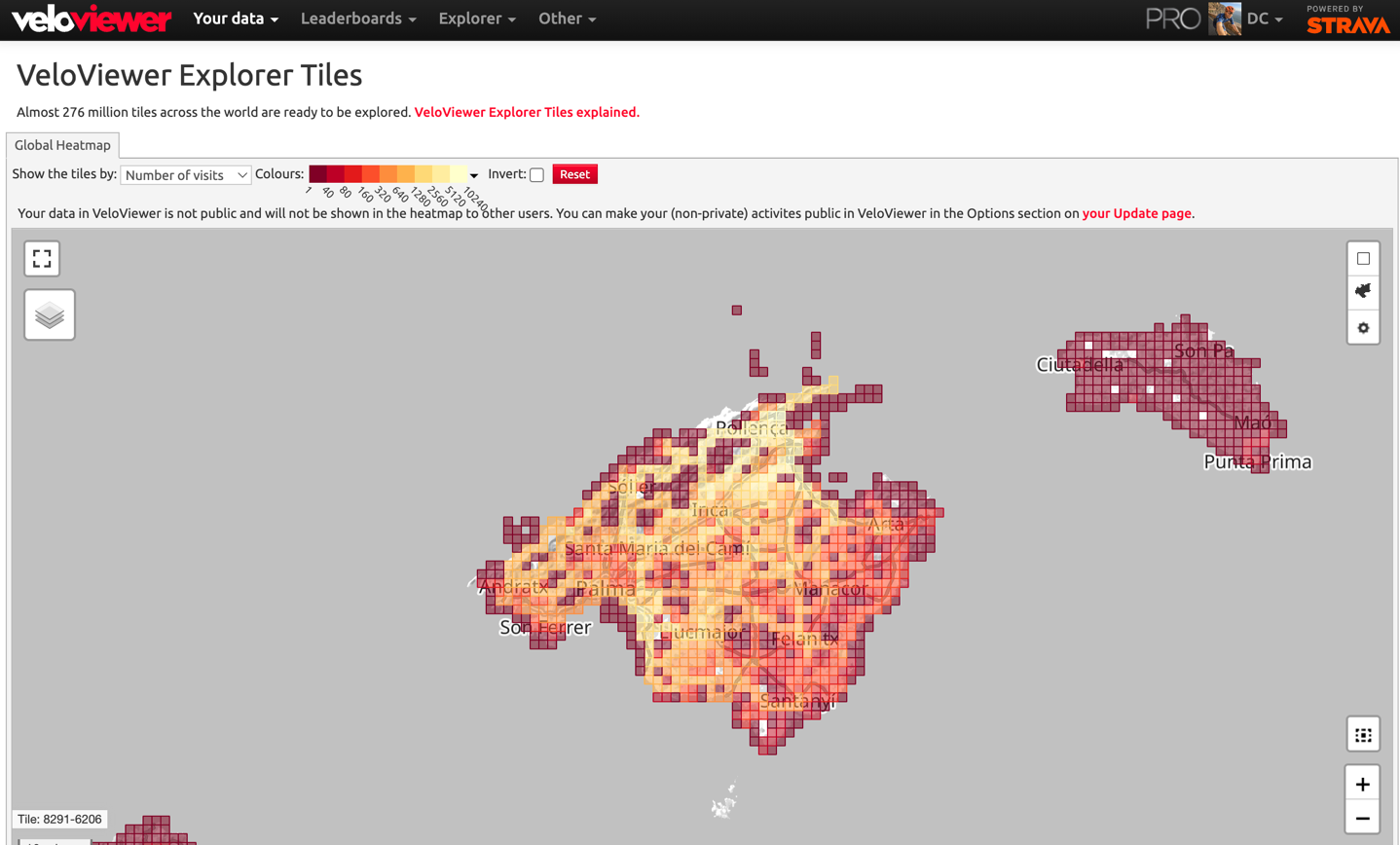
While Strava lawyers might try and say perhaps that line is there to prevent something else, any non-lawyer or lawyer would argue the opposite in court if they had to. That single paragraph basically says apps can’t do anything at all. Period.
The problem here is that Strava’s API terms are so broad and wonky now, that the API no longer serves a purpose, as stated by the above paragraph.
Nonetheless, I went back to Strava and asked them questions about many of these topics, trying to get clarification to see if this was a misunderstanding, they completely ignored the questions I had, and responded with:
“These changes were implemented to provide additional safeguards around our community’s data and to help ensure that a user’s Strava data can only be viewed by others on third-party apps in limited scenarios where sharing is both transparent and central to the functionality of the app. We recognize this is a change and are committed to working closely with partners during this transition.”
Point being, I gave them an opportunity to clarify things or set the record straight, and they said ‘nah’.
Add to that, they don’t seem all that committed to “working closely with partners”. As every single partner I’ve talked to over the last 24 hours has been completely broadsided by this change. They all received a generic e-mail Friday night, with a mere 30 days of notice to completely re-work their entire applications. Mind you, a 30-day period that includes the holidays (most companies would give at least 6 months of notice for something like this).
I suspect we’ll see a lot of companies just shut off the API entirely, and perhaps that’s Strava’s goal. Though, I fail to see how that benefits paying Strava subscribers, and thus Strava’s bottom line. Strava seems to be working very hard to kill off the community of tens of thousands of apps that arguably made it so popular.
No AI Usage & Analytics:
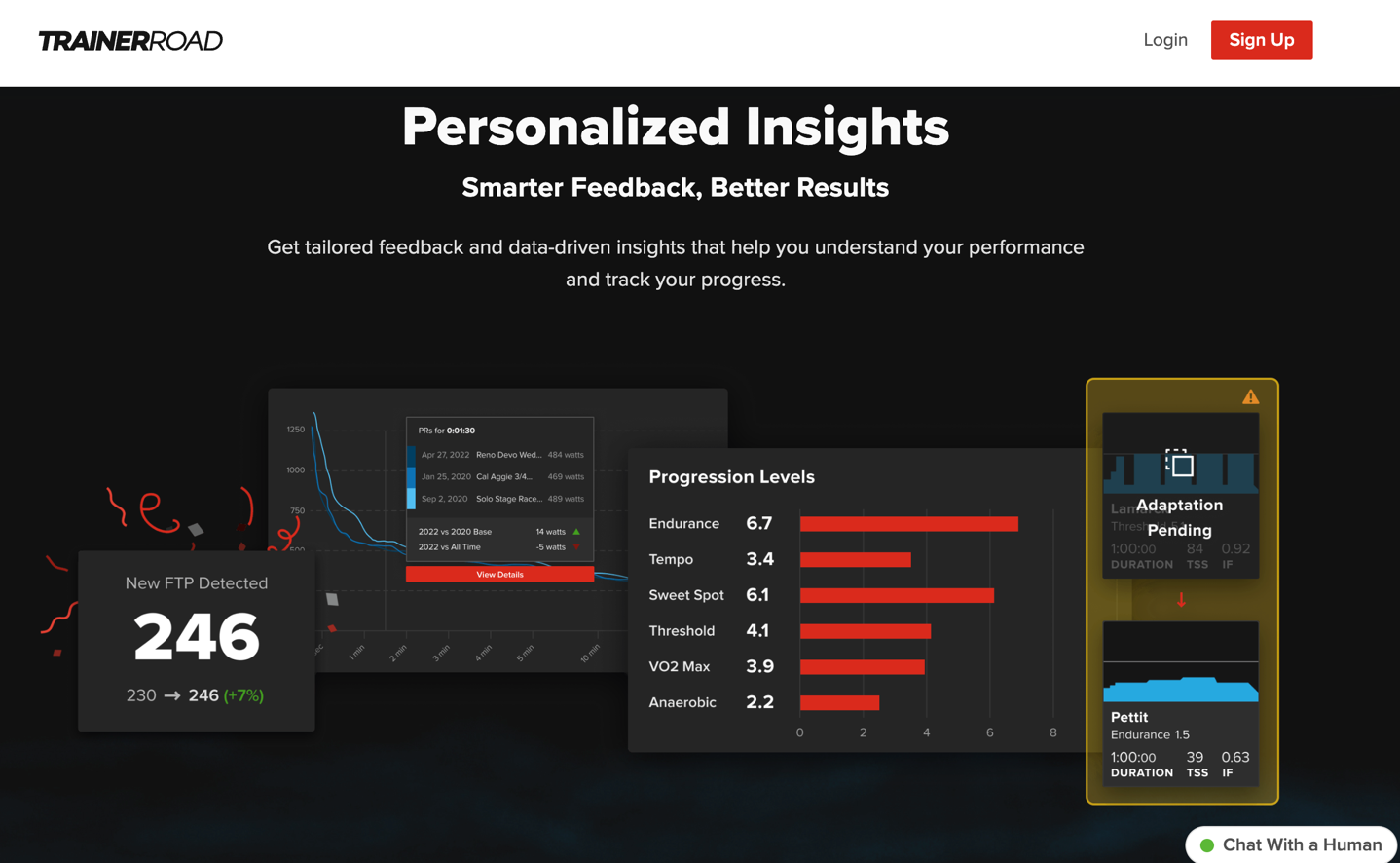
The next issue is just as crazy as the the others. It says that 3rd party apps may not use artificial intelligence processing in any way, for your data coming from Strava. Specifically, it stays the following:
“You may not use the Strava API Materials (including Strava Data), directly or indirectly, for any model training related to artificial intelligence, machine learning or similar applications.”
Of course, the term “machine learning or similar applications” basically means “you may not do any processing at all” on it, especially when combined with the above ‘no analytics’ clauses.
This particular line item immediately kills apps like TrainerRoad and Xert using data from Strava, but also countless other apps that pull in your own workout data via Strava, and then use some sort of processing to analyze it. Machine learning is hardly new or fancy. And putting in there “similar applications”, what on earth does that mean?
TrainerRoad and others use “AI” (however they want to define it), according to their marketing, and thus, in less than 30 days, they’ll have to cease their entire platform, or, disconnect Strava.
In the case of platforms like TrainerRoad, I suspect they’ll simply disable Strava altogether, and force everyone through direct connections. This will be fine for Garmin users, but as of right now there’s no inbound connection for Wahoo users (though that’s coming). And for people pushing Zwift workouts to TrainerRoad, that too will break until TrainerRoad completes their API connection in January.
But that won’t solve the larger issue TrainerRoad and other companies face, which is having to pull in the other 3rd party workout data types. TrainerRoad doesn’t have a connection to Suunto. Or Polar. Or AmazFit. Or Google. Or Fitbit. Or…I could do this all day. Strava solved that, to the benefit of both consumers and all companies involved.
Now Strava seems to want to own the “AI space” with its always-helpful AI insights that simply re-word my activity titles and tell me something vaguely positive but usually wrong.
Update from Strava (Nov 19th):
After publishing this post and video, Strava has issued an update in response. Note, they didn’t reach out or respond to me with the text, but did respond to The Verge where the updated text was originally issued, before publishing it on Strava’s own newsroom site. The Verge e-mailed me the update with permission to use, prior to Strava’s posting. Here’s the full text of the update:
Updated on Nov. 19
We wanted to provide some additional context around the changes to our API Agreement and the impact for our users and developers. We currently anticipate these changes will impact less than .1% of applications and proactively notified the majority of those affected last week.
Enhanced Privacy and User Control
Privacy and user control are at the forefront of our platform. As a result, we are committed to evolving our API practices as regulatory requirements and user expectations shift. This includes the decision to limit the ability of a user’s data to be displayed by third-party apps in ways the user may not expect. Specifically, we want to thoughtfully address situations where users connect to a third-party app and are unaware that their data is being surfaced not just for their own use and visibility, but also to other users (for example, in a public feed or heatmap). The latest API changes address this scenario and provide a more consistent framework for Strava user data.
Training AI Models
We believe in the potential of AI to transform the athlete experience–whether it’s delivering more personalized insights to help you reach your goals, generating route or training recommendations, or countless other possibilities. But innovation in this space must be handled responsibly and with a firm focus on user control. As part of our generative AI features, we are committed to implementing thoughtful solutions that prioritize user control and the ability to opt out.
Third-party developers may not take such a deliberate approach to training AI models and as a result, we believe the best decision for the platform and for users is to prohibit the use of data extracted from Strava users in this manner. Our previous terms already disallowed the use of Strava user data in model training and development but we’ve made this more explicit in light of the increasing activity in this space.
No Impact to Most Developers
We recognize that our platform thrives because of the creativity and dedication of third-party developers who build tools to complement and extend Strava’s capabilities. We are steadfast in our commitment to fostering this ecosystem. We anticipate that these changes will affect only a small fraction (less than .1%) of the applications on the Strava platform–the overwhelming majority of existing use cases are still allowed, including coaching platforms focused on providing feedback to users and tools that help users understand their data and performance.
Collectively, these changes reflect our commitment to ensuring that Strava remains a trusted platform for athletes and developers alike. That means holding ourselves—and anyone building on our platform—to high standards.
However, ultimately, it doesn’t actually change things – in fact, kinda doubles down on it. In it, Strava basically says three things:
A) 3rd party apps can’t show data beyond the user itself. Just as before, this still breaks coaching apps. Strava tries to confuse people by saying “the overwhelming majority of existing use cases are still allowed, including coaching platforms focused on providing feedback to users and tools that help users understand their data and performance.” – however, what they’re actually saying is 3rd party coaching apps can provide feedback, as long as that’s computational feedback. Coaching apps still cannot let human coaches see the data. Had that been the case, Strava would have simply said that, and notified coaching apps. They’ve done neither, and multiple coaching apps I’ve talked to have confirmed Strava hasn’t changed their position, but has scheduled meetings to talk about the impacts.
B) Artificial Intelligence and Machine Learning is still prohibited. Again, Strava tries to keep distracting people by saying “training models” is not permitted. Yet the terms are very clear, both training and usage isn’t permitted. Still, as any company can tell you, even if it were just training (which again, it isn’t), these models can’t get better without training on the same data for whatever application purpose they are using. After all, last I checked, Strava themselves doesn’t give us permission to allow/deny their access to our data for AI training purposes.
C) “No impact to most developers” – In the update, they say “We anticipate that these changes will affect only a small fraction (less than .1%) of the applications on the Strava platform”. Except, that’s the most disingenuous way of writing it. Strava has tens of thousands of connected applications, the vast majority of which are tiny hobbyist applications that may have 1 user or a handful of users. Instead, it’s the big-ticket applications that matter here with the most users. Strava isn’t saying 0.1% of users, just 0.1% of applications.
–
Ultimately, it seems like Strava’s API itself needs an update if Strava believes users need more control. And to be clear – I’m 100% behind giving users more control. Strava could easily add check-boxes for “AI data usage” and “Show data publically” to the 3rd party platform API authentication dialog (just like they do today for other features). They could easily require 3rd party developers to ensure consent (just like they do today for other features). And they could easily require developers to adhere to various rules (just like they do today).
Going Forward:

Based on these API terms changes, I don’t see how any apps can leverage Strava data going forward. Especially with the specific line item of “You may not process or disclose Strava Data, even publicly viewable Strava Data, including in an aggregated or de-identified manner, for the purposes of, including but not limited to, analytics, analyses, customer insights generation, and products or services improvements.” – that’s fundamentally what any app does: It processes your Strava data and provides some sort of analytics.
Perhaps Strava will try and argue otherwise. In fact, I e-mailed them last night asking them to clarify these very questions, since these seemed pretty broad and impactful. The response was nothing more than sending me to the already-existing page about the API updates.
I feel at times that Strava wakes up each morning, heads to work, looks out over the San Francisco Bay from their offices, and asks itself: How can we anger our users and partners today? How can we make everyone’s life more difficult today?
Every time Strava does something good (such as last week’s night heat maps), they immediately go and ruin that good love with something to upset their user base. And obviously, that’s their prerogative as a company. But it just seems that no company in the sports tech space spends as much time and energy proactively trying to anger their users as Strava does.
I go back to Strava’s new CEO in his keynote address at Camp Strava this past summer (7:22 in video), where he said:
“If you envision the whole active community, along with the connected fitness industry as sorta like one giant cycling peloton…then Strava should be leading the way. We should be your lead-out rider, blocking the wind, creating a slip-stream, helping the whole peloton move faster, and more efficiently.”
I’m unclear on how these changes fit with that recently announced vision.
Ultimately, I use and significantly enjoy the core of Strava as much as most other people. I’m on the platform daily. But man…c’mon Strava, just do better.
FOUND THIS POST USEFUL? SUPPORT THE SITE!
Hopefully, you found this post useful. The website is really a labor of love, so please consider becoming a DC RAINMAKER Supporter. This gets you an ad-free experience, and access to our (mostly) bi-monthly behind-the-scenes video series of “Shed Talkin’”.
Support DCRainMaker - Shop on Amazon
Otherwise, perhaps consider using the below link if shopping on Amazon. As an Amazon Associate, I earn from qualifying purchases. It doesn’t cost you anything extra, but your purchases help support this website a lot. It could simply be buying toilet paper, or this pizza oven we use and love.







